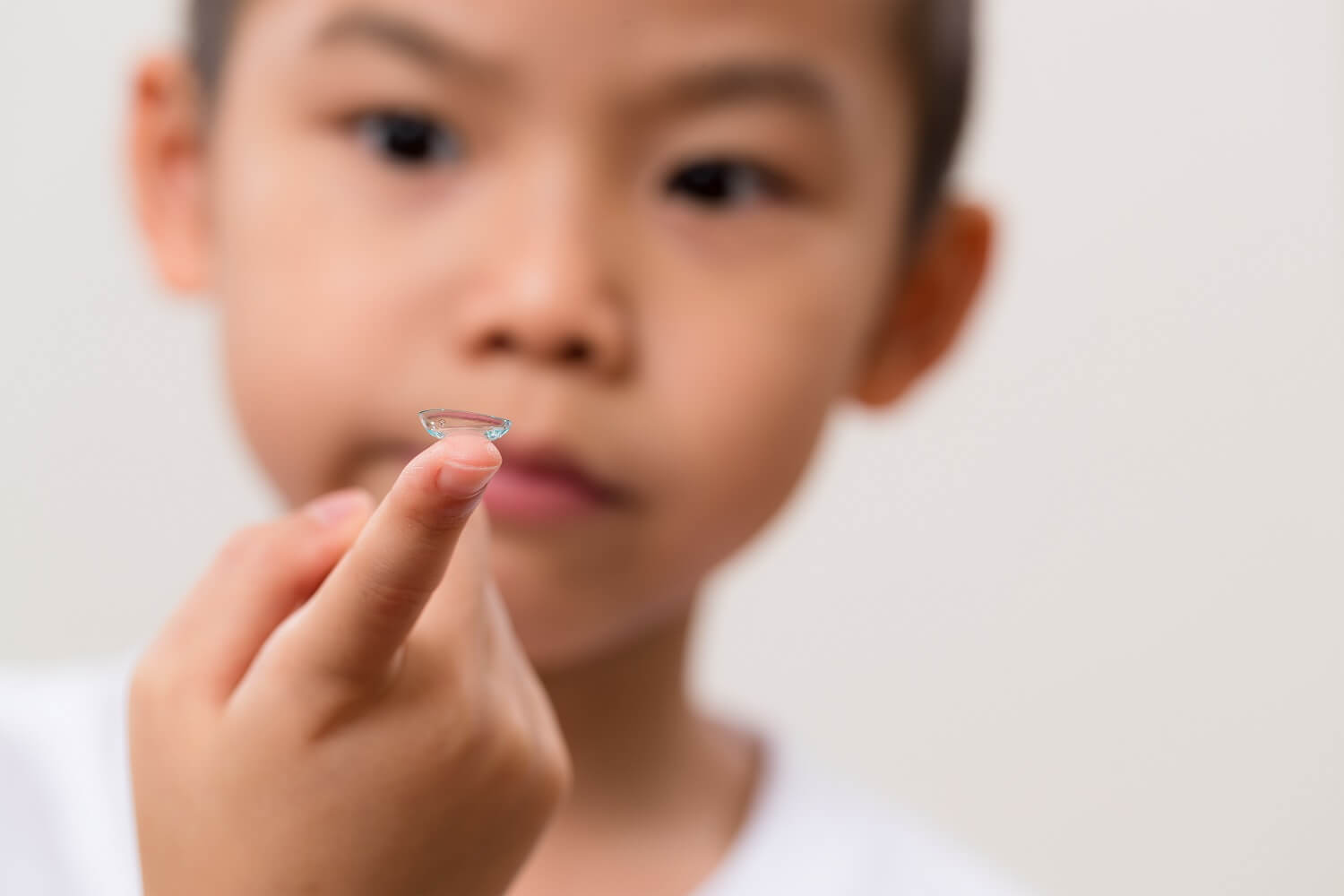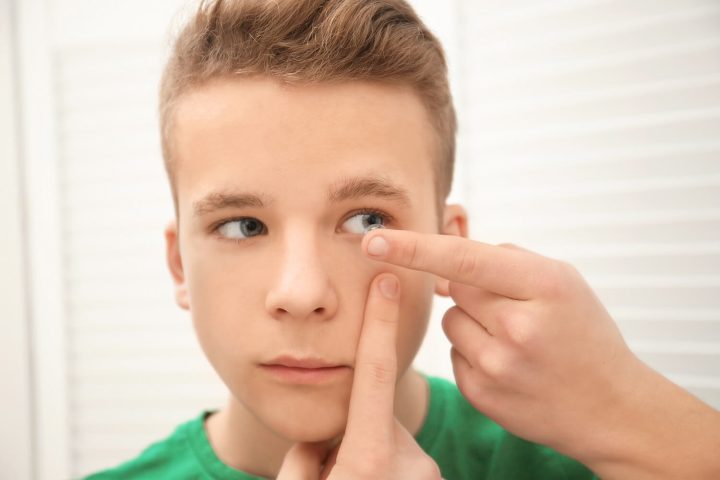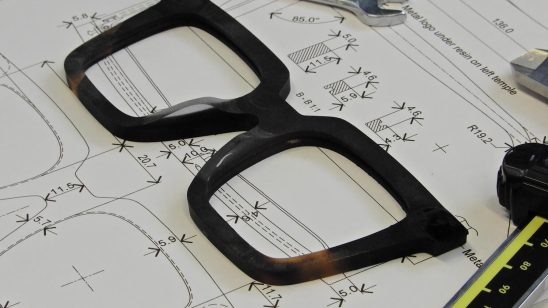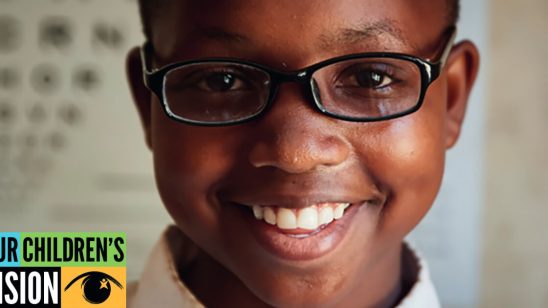Press Release by Johnson & Johnson Vision
Children, teenagers & contact lenses
The need for vision correction affects more than half of the world’s population. It can occur at an early age. Both glasses and contact lenses are an option for children, teenagers and adults who need vision correction. Through a comprehensive eye examination, an Eye Care Professional can help you determine the best choice, regardless of age. This article will compare contact lenses and glasses and will explain some of the different contact lens options available to your child. Frequently asked questions on the subject of contact lens wear in childhood and adolescence will be answered, and the safe and comfortable use of contact lenses by young patients will be demonstrated. But remember, the final choice of vision correction for you and your family should always be made with your Eye Care Professional.
Are children good candidates for contact lenses?
Children are excellent candidates for contact lens wear.
Many can be highly active, and glasses are not convenient for many recreational activities. Besides children are not less likely than adults to be motivated and to listen to the Eye Care Professional. Most children are capable of caring for their own lenses, either with or without supervision, and will benefit greatly from contact lens wear. Both children and teens find contact lenses a more convenient mode of correction, and younger children are just as skilful as teenagers at handling and wearing contact lenses.
What are the advantages of children wearing contact lenses?
There are many reasons why children of all ages can benefit from wearing contact lenses. Children and young adults tend to have active lifestyles. They play around, take part in sports, and generally move a lot more than adults do. Contact lenses can be used during these activities without the need to take them out. In addition, they do not limit peripheral vision as glasses do. Besides the obvious vision benefits, contact lenses can have a psychological impact resulting in increased selfconfidence compared to spectacle wear.
A study showed that, overall, both children and teens were more satisfied with wearing contact lenses than they were with wearing spectacles.1 Children may be more likely to wear their vision correction, and more likely to participate in activities, when they don’t have to worry about losing, damaging or breaking spectacles.
Additionally, one study showed that children who wore contact lenses felt better about their physical appearance, acceptance among friends, and ability to play sports than children who wore glasses. Those children who disliked wearing glasses also felt more confident about their schoolwork when they began wearing contact lenses.2

What is the BEST age to start wearing contact lenses?
What if the correction need of my child is still developing?
Although the eye tends to stop growing in mid-teens, many myopes (the shortsighted) in particular, find their vision continuing to change into their late teens and early twenties.
Waiting until vision or the eye’s shape changes have stabilized is not needed. A new prescription can be provided at regular 6 monthly or annual check-ups – disposable contact lenses make this process very simple.
Studies have shown that when fitting children with contact lenses, there are no significant differences in the eye’s shape or size compared with adults and hence fitting would not be limited as a result of lens parameter availability.3
Research also confirms that neither contact lenses nor glasses have an influence on how vision acuity develops when the correction is optimal.4 Not using vision correction in hopes that refractive errors would not progress is a myth and the refractive error may even progress more without full correction.

Is wearing and caring for contact lenses time consuming?
There is the option of a more convenient contact lens wear method – daily disposable contact lenses. With those, the child wears a fresh pair of lenses every day and the lenses are simply thrown away at the end of the day. You do not need to worry about cleaning the lenses at all.
Also, the cleaning of reusable lenses is no longer a big hassle, thanks to simplified, multipurpose cleansing solutions, which make lens care and maintenance much easier than in the past. The exact amount of time required for lens care depends on the type of lens care regimen chosen. In any case, contact lens care nowadays is very simple and quick, and it does not consume too much time.
Are children compliant with proper contact lens use?
Children will be taught by their Eye Care Professional how to use and care for their contact lenses. Young children should, nonetheless, be supervised by parents who are obviously keen to ensure that any risks associated with contact lens wear are kept to a minimum. Children are very adaptable and once good habits have been established, they are often retained into adulthood.
Education and re-education of children and parents is vital to reinforce compliance. Some children can use part time contact lenses for example when they are performing sports activities. In this case Daily Disposable would be a better option for them.

Children’s eyes and OXYGEN
Children’s eyes require the same amount of oxygen as adult’s eyes because the corneal physiology is similar.
Modern, soft contact lenses provide sufficient oxygen to the eye for daily wear. Appropriate use of contact lenses will provide enough amount of oxygen to children’s eyes. Ask your Eye Care Professional for the best option for your child regarding the materials and modality of contact lenses.
Do children need UV protection for their eyes?
What TYPE of lenses should be used?
There are currently many different lens types on the market, and there should be an appropriate one for the vast majority of children and teens who want to wear contact lenses. There are, of course different advantages with each lens type. When deciding which option to choose, the features of each lens should be considered, along with the individual child’s optical and lifestyle needs. The best choice for children with regard to material and modality is a daily disposable contact lens. Your Eye Care Professional can advise you and guide you on the most appropriate type of contact lens use.

Are contact lenses expensive?
Your Eye Care Professional can discuss quality of life and vision benefits with you, along with the costs associated with contact lenses. In fact, contact lenses are unlikely to cost a great deal more than some spectacles – especially if the child has a tendency to break their glasses regularly.
Contact lenses provide a number of benefits beyond simply correcting a child’s vision. This should give parents greater confidence in allowing children to choose contact lens wear as an option of vision correction. Eye Care Professionals working with parents can choose from a wide variety of contact lens options, including lenses for astigmatism, frequent replacement or daily disposable contact lenses, to find the best fit for each child.

1. Walline J, Gaume A, Jones L et al. Benefi ts of Contact Lens Wear for Children and Teens. Eye and Contact Lens 2007; 33(6): 317-321.
2. Walline JJ, Jones LA, Sinnott L, et al; the ACHIEVE Study Group. Randomized trial of the effect of contact lens wear on self-percepti on in children. Optom Vis Sci 2009; 86(3): 222-232.
3. Logan NS, Gilmarti n B. Myopia: Development and control in children. Optometry in Practi ce 2005; 6(4): 149-162.
4. Walline JJ1, Mutti DO, Jones LA, Rah MJ, Nichols KK, Watson R, Zadnik K. The contact lens and myopia progression (CLAMP) study: design and baseline data. Optom Vis Sci. 2001 Apr;78(4):223-33.
5. Kwok LS, Kuznetsov VA, Ho A, Coroneo MT. Preventi on of the adverse photic effects of peripheral light-focusing using UV-blocking contact lenses. Invest Ophthalmol Vis Sci 2003; 44(4): 1501-1507.
6. Walsh K. UV radiation and the eye. Optician 2009; 237 (6204): 26-33.
* All ACUVUE® Brand Contact Lenses have UV-blocking to help provide protection against transmission of harmful UV radiation to the cornea and into the eye. UV-absorbing contact lenses are NOT substitutes for protective UV-absorbing eyewear such as UV-absorbing goggles or sunglasses because they do not completely cover the eye and surrounding area. You should continue to use UV-absorbing eyewear as directed by your Eye Care Professional.






